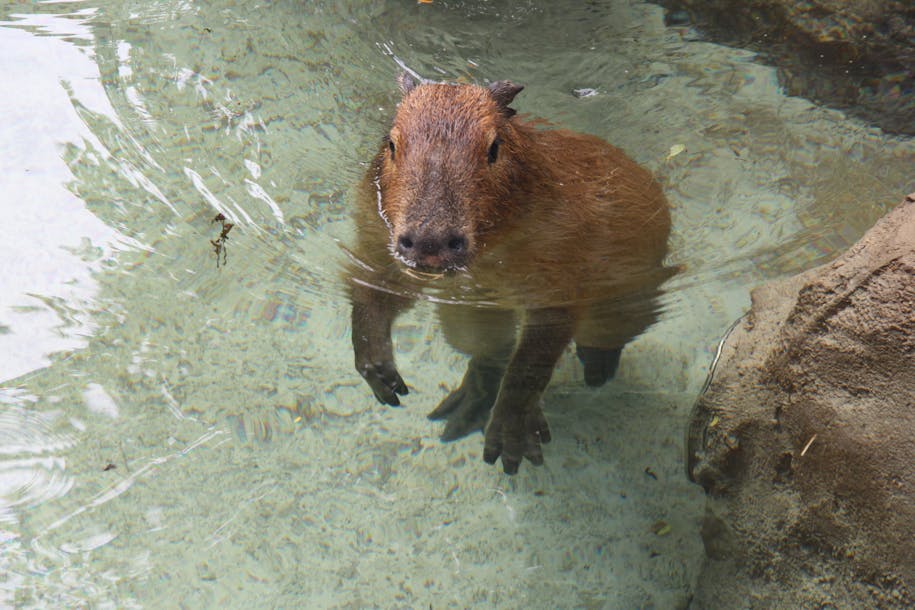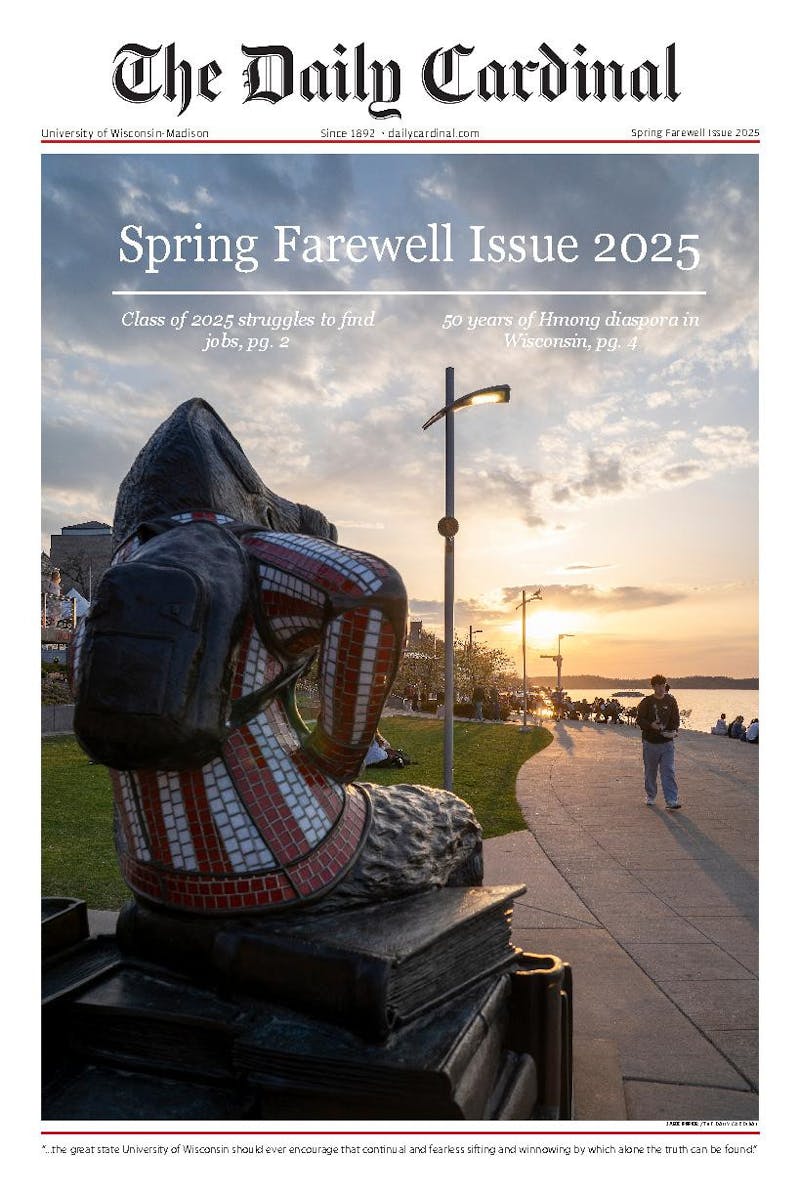A short walk from University of Wisconsin-Madison’s lecture halls and dorms reveals a different kind of campus where polar bears plunge, badgers scurry and capybaras do what they do best — loaf.
Welcome to Henry Vilas Zoo: a 28-acre urban zoo housing over 650 animals that’s free to the public — a hidden gem in the heart of Madison that’s redefining the way its visitors connect with wildlife.
Unlike many traditional zoos, Henry Vilas isn’t just about seeing animals, it’s about understanding them. The zoo, which is accredited by the Association of Zoos and Aquariums (AZA), remains one of few free-admission facilities of its kind in the country. Its mission takes a different approach to conservation, emphasizing empathy.
Henry Vilas works with the Advancing Conservation Through Empathy (ACE) for Wildlife network, a network of different zoos and aquariums who strive to use empathy in advancing conservation efforts and motivating people to take action on behalf of animals.

Henry Vilas staff developed what they call an “Interpretive Master Plan,” which aims to shift public perception of animal residents, particularly those that often get overlooked or feared, such as cockroaches, spiders and snakes.
Using animal’s names, rather than just knowing their species, shows that guests feel more empathetic and are more likely to take action on their behalf, according to Jess Thompson, former keeper and current education and conservation curator at the zoo.
“It's way easier to feel a connection to Monty the snake than it is to some random, faceless snake,” Thompson told The Daily Cardinal. “Saying things like, ‘snakes really like to rest after they have a big meal. Do you like to rest after you have a big meal?’ helps people relate [and] realize that we are more similar than they may have thought.”
From signage highlighting animal preferences to naming every resident — even the so-called “unhuggables” — the zoo’s efforts have a measurable impact.
The zoo focused heavily on the herpetarium, an area that houses snakes, turtles and frogs.
“We’ve told a few stories about Rio the rattlesnake, who hitchhiked here on a truck and how we've been able to provide him a safe space,” Thompson said. “Some of the comments that we've been able to hear since then have been really cool, people saying things like, ‘Oh, I'm so glad he's safe’ and using his name.”
Henry Vilas conducted pre and post surveys to measure their success with the grant money they received through their partnership with ACE for Wildlife.
“We looked at what people were talking about around all of our signs and how much time they were spending with them before we made any of the changes, and then again afterward. And we definitely saw an increase in empathy indicators,” Thompson said.
Now, the zoo is working to translate that empathy into action, helping visitors find ways to support conservation efforts in their own lives.
Scientific research and education are also central to the zoo’s mission. As an AZA-accredited institution, Henry Vilas participates in studies aimed at improving care for both captive and wild animals.
“We have animals here so that we can help their counterparts in the wild, and so that they can act as ambassadors. And so one of the ways that they can do that is by participating in scientific projects. We have done a bunch of projects throughout the years with a lot of different species,” Thompson said.
These research projects not only contribute to conservation efforts in the wild but also deepen zookeeper’s understanding of animal health and behavior. That knowledge is applied directly to the care of the animals at Henry Vilas, often in surprisingly collaborative ways.
“Our keepers work really hard on training, and so they do a lot that helps our animals participate in their own care every day,” Thompson said. “That can be anything from voluntary vaccinations where they'll come up and put their shoulder up against the mesh, and then we can give them a vaccination, draw blood, brush their teeth, look in their eyes, treat their paws or trim their nails.”

Henry Vilas Zoo already has strong ties with the UW-Madison Vet School.
"I don't think the zoo would be as good as it is without our partnership with the School of Veterinary Medicine," said Kristin Moala, marketing manager at the zoo. "They've done amazing things like, aside from orangutan births, we've had CT scans for sick animals... Dr. Snyder is basically an animal dentist, and he has done tooth extraction on our African lion."
Their full-time vet is a former UW-Madison professor who brings veterinary students regularly to shadow her on rounds. Specialists from the university, like dentists and ophthalmologists, treat zoo animals both on and off site.
Additionally, the zoo collaborates with engineering students who design tools and solutions to assist zookeepers in their daily tasks. Each year, the students take on a new project, tailoring their designs to meet the evolving needs of animal care and facility operations. For example, one year students created a device that zookeepers put on top of the bear roof that shoots treats into their yard, Moala said.
There are few college campuses located minutes away from a free, conservation-centered, research-driven zoo. For UW students and Madison residents alike, Henry Vilas offers more than just a break from the world — it’s a chance to connect with animals and even change the way you think about them. You might leave with a new favorite. Maybe even Rio.
Alaina Walsh is the associate news editor for The Daily Cardinal. She has covered breaking, city, state and campus news.
Ella Hanley is the college news editor for The Daily Cardinal and former associate news editor. She is a fourth-year journalism and criminal justice student and has written breaking, city, state and campus news. Follow her on Twitter at @ellamhanley.






